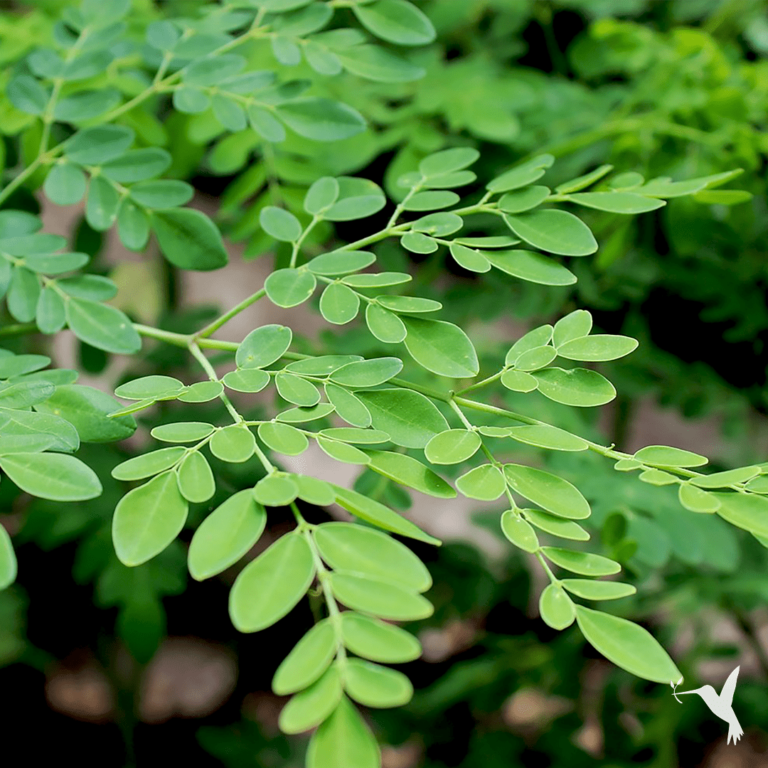DIY: Sprouting Grains at Home
Why Harvesting Your Own Sprouts Is a Great Idea (& How to Do It)
Sprouting at Home: Why & How
Newsflash: Fresh food is good for you! What about food so fresh it’s basically still growing when you eat it? Great for you, of course.
With just a bit of prep work, you can have food this fresh at home all the time, adding nutrients to your diet and crunch to your salad, sandwich, or stir-fry. By sprouting seeds, grains and nuts in your kitchen, you can fill your life with little sprouts that are cheap, tasty and textured, and easy to grow.
What Are Sprouts?
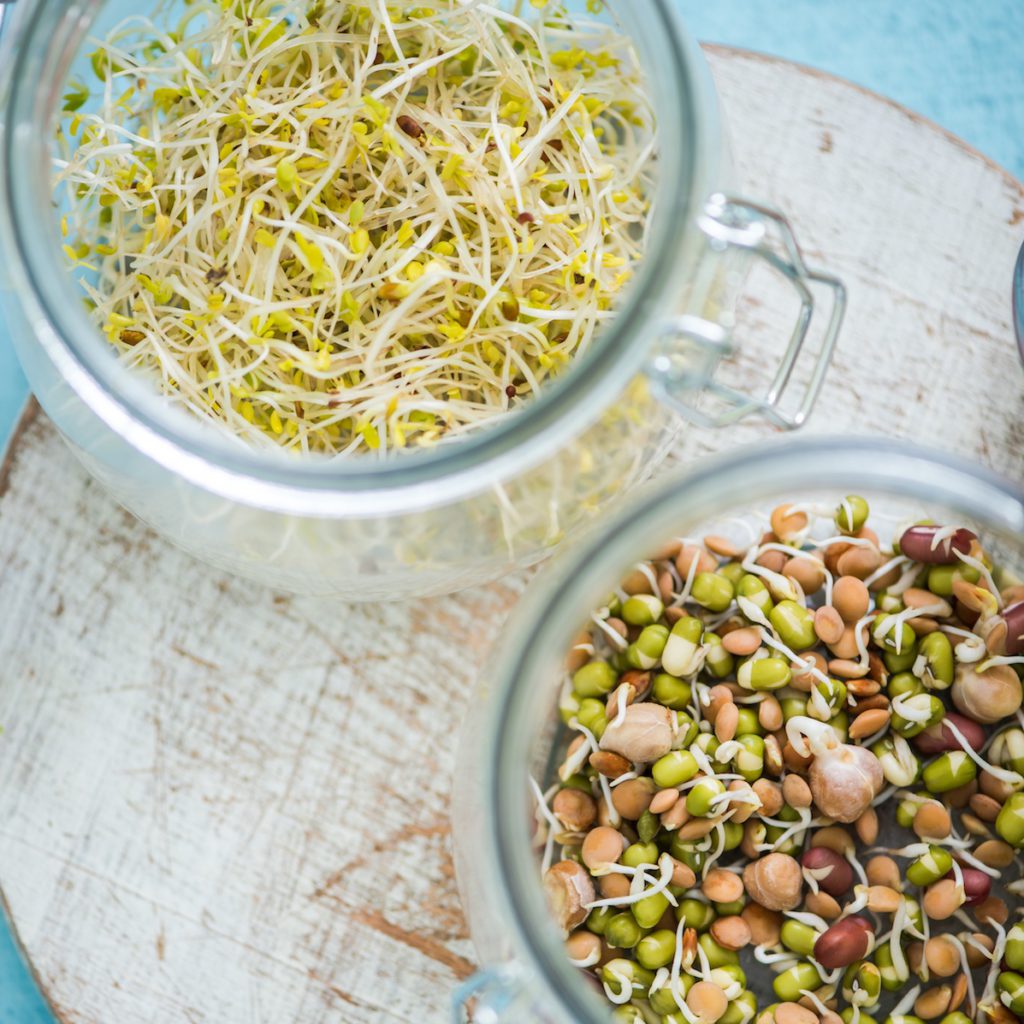
Sprouts come from the process of germinating seeds or beans. As they germinate and begin to grow, you can eat the bean, seed and sprout all together. You can eat them cooked or raw, depending on the type.
Sprouts are one of the easiest foods to grow indoors, and it is possible to sprout most types of nuts, grains, and seeds in your kitchen with minimal equipment and just a bit of counter space.
Benefits of Sprouting
The process of sprouting makes beans, nuts, and grains easier to digest and increases the nutritional profile.
Many nuts, grains, and seeds contain naturally occurring “anti-nutrients.” Phytic acid, for instance, is an anti-nutrient that binds to magnesium, zinc, calcium, and iron and makes these nutrients difficult to digest. Why would something loaded with nutrition also contain anti-nutrients? It seems counterproductive.
This binding process allows seeds to pass through the digestive system of an animal intact so they can then grow into plants. Sprouting breaks down anti-nutrients and enzyme inhibitors found in legumes, grains, and seeds, making them easier to digest, especially for people with digestive or autoimmune issues.
Even if you don’t have a particular digestive or autoimmune issue, sprouted grains will be easier on your body. Have you ever gotten gas from eating beans? Many people with perfectly functioning digestive systems feel this effect. As legumes sprout, the compounds that cause gas break down. Whether you feel a noticeable difference or not, your body will thank you.
Vitamins, Minerals & Beneficial Enzymes
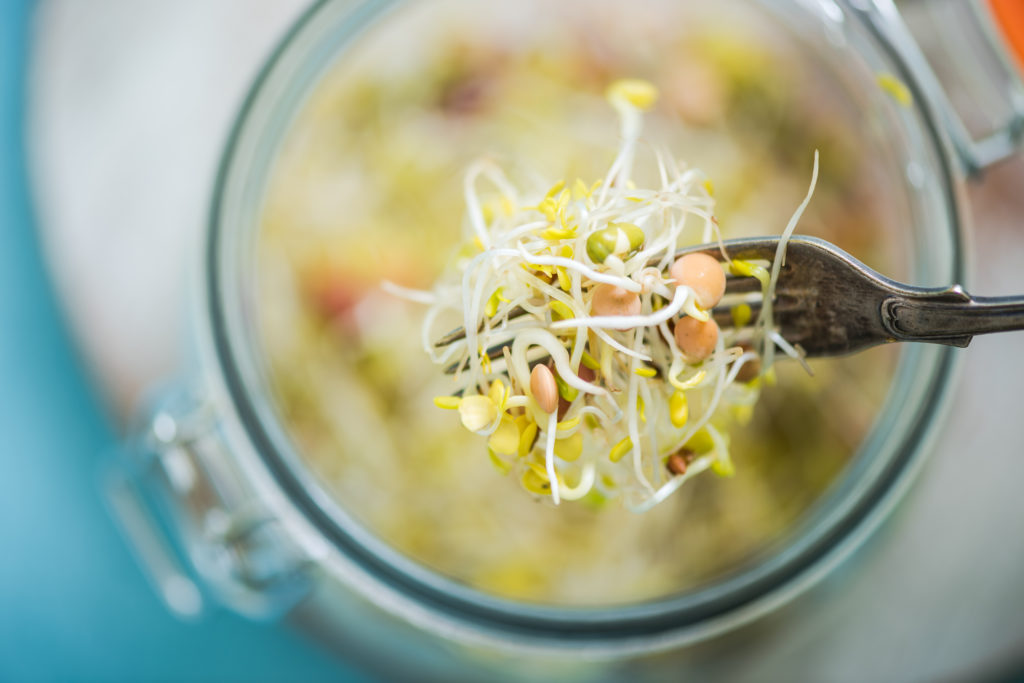
Newly germinated seeds (sprouts) need certain enzymes for their own growth and cellular health. When you eat a sprout, you are essentially consuming the entire plant, from seed to green, and all those health benefits are transferred directly to you.
Sprouts are a good source of protein, antioxidants, and minerals. The antioxidants and enzymes within them support healthy cell regeneration and protect against free radical damage. Sprouted seeds have increased amino acid content and higher content of B-vitamins, carotene and vitamin C. And the process of sprouting increases nutrient absorption, making nutrients and amino acids more available to the body.
The Downsides of Sprouting
You may have heard some bacteria scares about sprouted grains. This is a potential downside. The warm humid environment suitable for sprouts is also a prime habitat for bacteria.
It would be difficult to keep a large-scale, commercial operation clear from all types of pathogens. In your sweet little kitchen, however, you are in control of your environment, the seeds you use, the cleanliness of your sprouting jars, the air circulation, and the cleanliness of your hands. The chance of getting a food-borne illness with sprouts is greatly diminished when you sprout at home.
Just follow these simple instructions and be as clean as possible in your process.
How to Sprout: Easy Step-by-Step DIY Instructions
Supplies You Need to Grow Sprouts
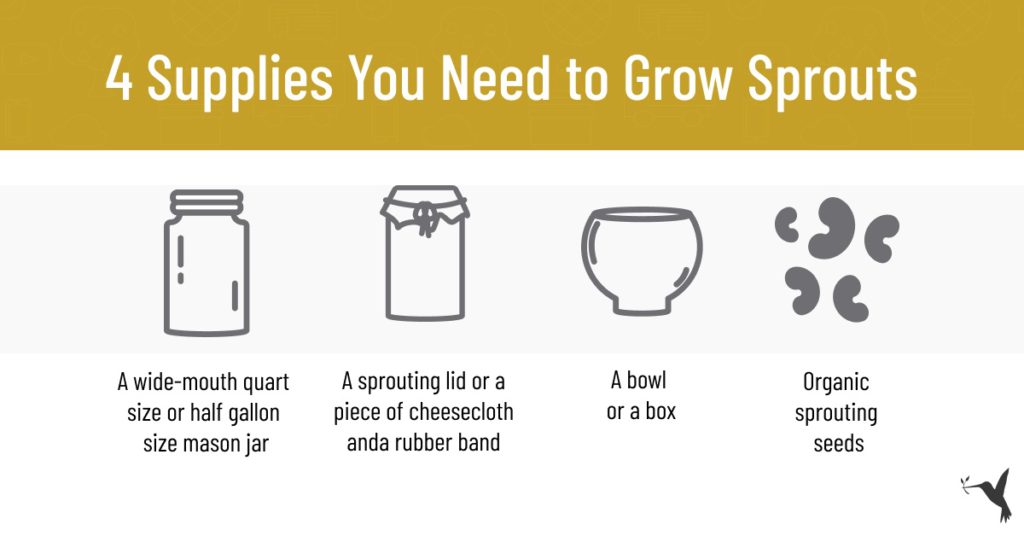
- A wide-mouth quart or half-gallon mason jar
- A sprouting lid or a piece of cheesecloth and a rubber band
- A bowl or box to help the jar stand upside-down at an angle
- Organic Sprouting seeds (Make sure they are specifically labeled “sprouting seeds” and “organic”)
When you get really into sprouting, you’ll find that there is specially-designed sprouting equipment, like sprouting trays. These make sprouting easier and allow for more growth more quickly. However, for beginning sprouting, it’s good to start small and simple!
What to Do
- Wash your hands and equipment well
- Pour seeds of one type into the jar. For a quart-size jar, use 1 teaspoon of small seeds like alfalfa or broccoli or 1/4 cup of beans and lentils
- Cover with cool water. Different seeds require different amounts of water and space, but as a general rule, you can use 1 part seeds to 3 parts water.
- Cover jar with a sprouting lid or cheesecloth and rubber band.
- Soak overnight, up to 12 hours.
- Strain off the water with a fine strainer, and then return the seeds to the jar.
- Rinse well and drain again. Cover jar with sprouting lid or cheesecloth.
- Place upside down at a slight angle so that excess water can drain off and air can get in.
- Re-rinse the sprouts several times a day, returning to the tilted position each time.
- Sprouting should begin in a day or two. Most sprouts are ready to harvest in 3-7 days.
- After you harvest, rinse the sprouts in cool water and store in a covered container in the fridge for up to a week.
Is Everything Sproutable?
You can sprout almost any legume, seed, or nut. Everything from chickpeas to alfalfa to kale to onions to clover. There are a few exceptions—not because they won’t sprout, but because they just aren’t ideal when there are so many other easier sprouts to grow.
Chia seeds, flax seeds, and other mucilaginous seeds, the ones that create the goo, are tricky to sprout properly, and may not be worth the effort.
Kidney beans are also less than ideal. If you do want to use kidney beans, be sure to boil the finished sprouts for at least 10 minutes before you eat them, otherwise they contain a toxin that causes nausea and diarrhea for many people.
Which Seeds To Use
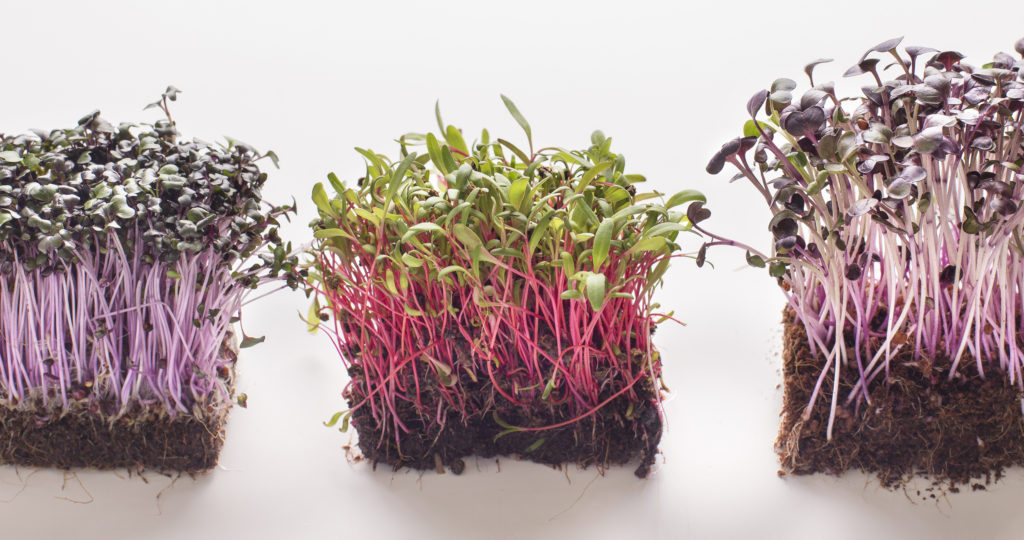
It is best to purchase organic, sproutable seeds that are tested and verified, and free of e.coli, salmonella, and other harmful bacteria and pathogens.
Some of the best sproutables are broccoli, alfalfa, radish and red clover seeds; lentils, soy and mung beans; and sunflower, pumpkin, and sesame seeds.
So get your seeds, wash your hands, and watch your little kitchen garden sprout and grow!
Have you sprouted before? Let us know in the comments below which seeds have you used! And be sure to check out To Your Health Sprouted Flour Co on Producers Market for some inspiring sprouted products.

